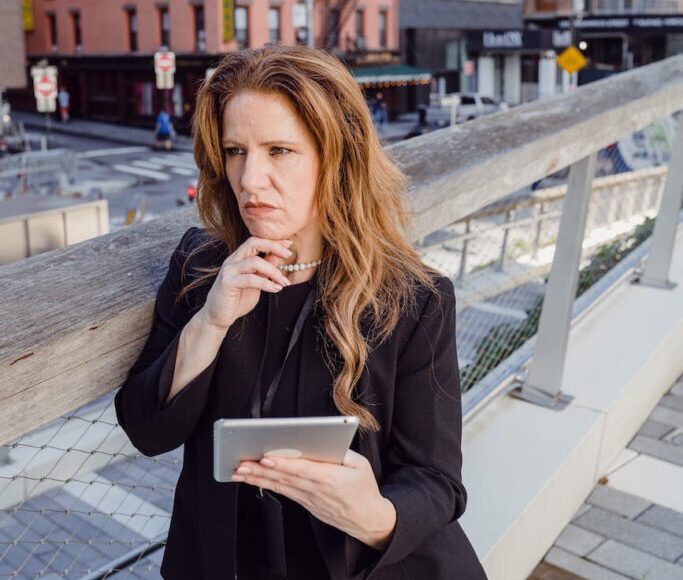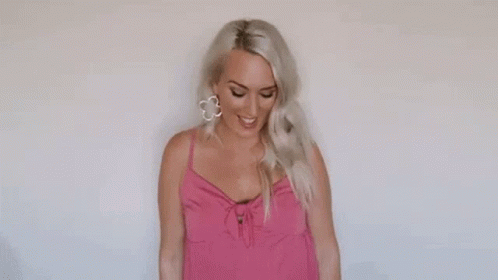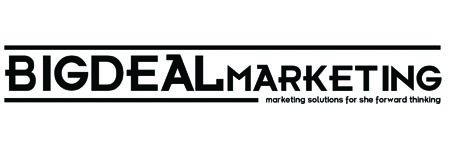The conversion funnel is a crucial concept for businesses looking to increase their online sales and grow their revenue. The conversion funnel is the process customers go through from being aware of a product or service to making a purchase. In this article, we will be discussing how to optimize each stage of the conversion funnel to increase conversions and grow revenue.
Table of Contents:
I. The Awareness Stage
- How to Optimize the Awareness Stage
- Importance of SEO and PPC
- Creating Engaging and Shareable Content
- Influencer Marketing
- Industry Events and Trade Shows
- Optimizing for Mobile
II. The Consideration Stage
- How to Optimize the Consideration Stage
- Creating Informative and Engaging Content
- Using Social Media to Interact with Potential Customers
- Customer Review Section
- Retargeting
- Importance of Excellent Customer Service
III. The Decision Stage
- How to Optimize the Decision Stage
- Retargeting and Email Marketing
- Easy and Secure Checkout Process
- Clear and Easy-to-Understand Return Policy
- After-Sale Service
- Loyalty Programs
- Creating a Sense of Scarcity or Urgency

Imagine a customer is in need of a new heating and cooling system for their home. They start their journey by becoming aware of the problem and researching different options. They may start by searching online for HVAC companies in their area, and reading customer reviews. This is the awareness stage of the conversion funnel.
As they begin to evaluate their options, they may visit the websites of different HVAC companies, watch videos, and read articles about the different types of systems available. They may also reach out to the companies for more information and to schedule consultations. This is the consideration stage of the conversion funnel.
After evaluating their options and receiving quotes, the customer may decide to go with a specific HVAC company. They may make a purchase through the company’s website, or by speaking with a representative over the phone. This is the decision stage of the conversion funnel.
And after the purchase, the customer may have a follow-up appointment with the HVAC company to ensure that the installation was done correctly, and that they are satisfied with the new system. This is the after-sale service stage.
Now let’s take an online retail business example:
Imagine a customer is in need of a new dress for a special occasion. They start their journey by becoming aware of the problem and researching different options. They may start by searching online for dress shops, and reading customer reviews. This is the awareness stage of the conversion funnel.
As they begin to evaluate their options, they may visit the websites of different dress shops, browse through different styles, colors and sizes. They may also read the product descriptions, view customer photos and watch videos about the dress. They may also compare prices and read customer reviews. This is the consideration stage of the conversion funnel.
After evaluating their options, the customer may decide to go with a specific dress from a specific shop. They may make a purchase through the website, by adding the dress to their cart and proceeding to checkout. This is the decision stage of the conversion funnel.
Once they’ve made their purchase, the customer may receive an email confirmation and a tracking number for their order. They may also have the option to track their order online, and receive updates on the status of their delivery. This is the after-sale service stage.
By understanding the different stages of the conversion funnel, businesses can create a customer journey that is tailored to the needs of their customers and ultimately increases conversions and revenue.

Let’s dive in and figure out how to optimize the conversion funnel!
I. The Awareness Stage
The first stage of the conversion funnel is the awareness stage, where the customer becomes aware of the product or service that is being offered. The main objective of this stage is to attract potential customers and introduce them to the product or service.
To optimize the awareness stage, businesses should use SEO and PPC to increase visibility and reach a larger audience. By using relevant keywords and phrases in the website content, creating high-quality and informative blog posts, and running ads on search engines and social media platforms, businesses can increase their visibility and reach a larger audience.
Another way to optimize the awareness stage is by creating engaging and shareable content, such as infographics and videos. This can help to increase brand awareness and attract potential customers who may not have been actively searching for the product or service.
Influencer marketing is also an effective way to optimize the awareness stage. By partnering with influencers or industry leaders who have a large following on social media, businesses can reach a new and wider audience, as well as build trust with potential customers.
Industry events and trade shows can also be used to optimize the awareness stage. By participating in these events, businesses can increase brand awareness, network with other businesses and potential customers, and even generate leads.
Finally, it is important to make sure that the business website is optimized for mobile devices, as more and more people are using their mobile devices to browse the internet. A mobile-friendly website can help increase the visibility of the product or service, as it will be more easily accessible for potential customers on the go.
How to Optimize the Awareness Stage
- Use SEO and PPC to increase visibility and reach a larger audience.
- Create engaging and shareable content, such as infographics and videos, to help increase brand awareness.
- Partner with Influencers to reach a new and wider audience, as well as build trust with potential customers.
- Industry events and trade shows can increase brand awareness, network with other businesses and potential customers, and generate leads.
- Optimizing for mobile device to increase visibility and give a better user experience.

II. The Consideration Stage
The second stage of the conversion funnel is the consideration stage, where the customer starts to evaluate the product or service that is being offered. The goal of this stage is to provide more information about the product or service and build trust with the customer.
To optimize the consideration stage, businesses should create informative and engaging content, such as blog posts, articles, and videos, that provide detailed information about the product or service. This can help to answer any questions the customer may have and provide more value to them.
Another way to optimize the consideration stage is by using social media to interact with potential customers. This can be done by responding to comments, messages, and reviews in a timely and professional manner, and by creating a social media presence that promotes the product or service in an engaging and authentic way. Live chat is a great conversion tool if you have the time and knowledgeable staff to support it.
A customer review section on the website can also help to build trust with potential customers. By providing a platform for customers to share their experiences with the product or service, businesses can increase transparency and credibility.
Retargeting techniques can also be used to optimize the consideration stage by showing ads to the customers who have been in contact with the business, these ads can remind the customer of the product or service and create a sense of urgency.
In addition, providing excellent customer service can build trust with potential customers and increase the likelihood of them making a purchase.
How to Optimize the Consideration Stage
- Provide more information about the product or service and build trust with the customer.
- Create informative and engaging content, such as blog posts, articles, and videos, to answer any questions the customer may have.
- Use social media and live chat to interact with potential customers, responding to comments, messages, and reviews.
- Create a customer review section on the website where customers can share their experiences, and read other’s.
- Retargeting can remind the customer of the product or service and create a sense of urgency.
- Provide excellent customer service to build trust with potential customers.

III. The Decision Stage
The third and final stage of the conversion funnel is the decision stage, where the customer decides whether or not to make a purchase. The goal of this stage is to increase conversions and grow revenue.
To optimize the decision stage, businesses should use retargeting and email marketing to remind the customer of the product or service and provide any final incentives to make a purchase. By showing ads to customers who have already visited the website or interacted with the product or service, businesses can create a sense of urgency and motivate them to make a purchase. Email marketing can also be used to remind the customer of the product or service and provide any final incentives to make a purchase. By sending targeted emails with special promotions, discounts, or other incentives, businesses can motivate the customer to make a purchase.
Providing an easy and secure checkout process is also crucial for optimizing the decision stage. By offering multiple payment options, such as credit card, PayPal, or Apple Pay, and implementing secure protocols to protect the customer’s personal and financial information, businesses can increase the likelihood of converting potential customers into actual customers.
A clear and easy-to-understand return policy can also help to optimize the decision stage. By providing a transparent and straightforward return policy, businesses can give the customer a sense of security and trust in the business, which can increase the likelihood of them making a purchase.
Providing excellent after-sale service can also help to optimize the decision stage. By offering a money-back guarantee or warranty on the product or service, businesses can increase customer satisfaction and loyalty, and increase the chances of repeat business and positive reviews.
Finally, businesses can optimize the decision stage by offering a loyalty program or rewards program for customers. This can encourage repeat business and create a sense of community and engagement among customers.
How to Optimize the Decision Stage
- Use retargeting ads and email marketing to remind the customer of the product or service and provide any final incentives.
- Provide an easy and secure checkout process.
- Provide a clear and easy-to-understand return policy.
- Provide excellent after-sale service to increase repeat business and positive reviews.
- Offer a loyalty program or rewards program to encourage repeat business and create a sense of community among customers.
Overall, the conversion funnel is a crucial concept for businesses looking to increase their online sales and grow their revenue. By optimizing each stage of the conversion funnel, businesses can increase conversions and ultimately grow their revenue. We’ve provided a detailed explanation on how to optimize the awareness, consideration and decision stages of the conversion funnel by providing information, building trust, and offering incentives and creating a sense of urgency. By following the tips and strategies outlined in this article, businesses can increase their visibility, attract potential customers, and ultimately convert them into actual customers. Or one could hire a qualified Digital Marketing Agency like BIGdeal Marketing Solutions
In conclusion, it’s important to note that the conversion funnel is not a one-time process, it’s a continuous process, businesses should always be testing and optimizing their website and marketing strategies to improve their conversion rate. By monitoring the results, businesses can make data-driven decisions and make necessary adjustments to improve the conversion funnel and boost their revenue.
Comment below if you’d like me to dive into any of the strategies mentioned here… maybe I can make a series out of this topic!

Hiring a professional marketing agency can be a good idea for helping a business with their conversion funnel as well as many other arduous tasks in marketing and advertising. Here are a few reasons why you should consider hiring a digital marketing agency :
- Expertise: Professional marketing agencies have experts who are well-versed in different aspects of digital marketing, including SEO, PPC, social media, content marketing, and more. They have the knowledge and experience to help businesses optimize each stage of the conversion funnel.
- Resources: Professional marketing agencies have access to the latest tools and technologies, and can provide businesses with the resources they need to optimize their conversion funnel. This can include analytics tools, automation tools, and more.
- Strategy: Professional marketing agencies can help businesses create a comprehensive strategy that takes into account their specific goals, target audience, and budget. They can help businesses to identify the most effective tactics and channels to reach their target audience and optimize their conversion funnel.
- Data-driven: Professional marketing agencies can help businesses to track and analyze data to optimize their conversion funnel. By monitoring the results, businesses can make data-driven decisions and make necessary adjustments to improve the conversion funnel and boost their revenue.
- Time-saving: Hiring a professional marketing agency can save businesses a lot of time. Business owners can focus on other important aspects of the business, while the marketing agency takes care of the marketing tasks.
Overall, hiring a professional marketing agency can be a good idea for businesses that want to optimize their conversion funnel and grow their revenue. They can provide businesses with the expertise, resources, strategy, data-driven approach and time-saving that they need to achieve their goals. If you’re needing help with business strategy or, more specifically, conversion funnel research and deployment, book an appointment now!

